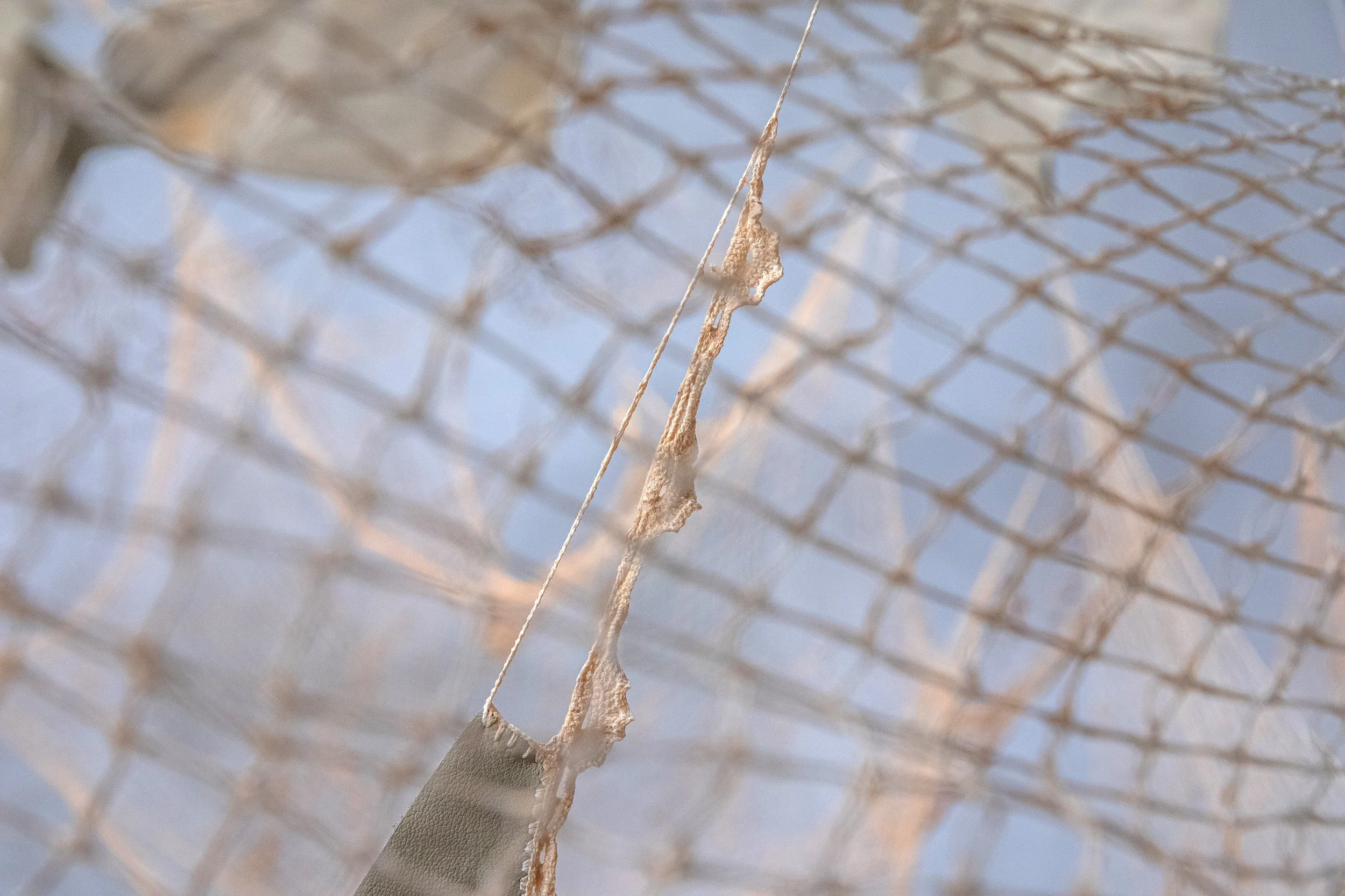A Loving Way to Hold Our Precarity
MFA Exhibition | School of the Art Institute of Chicago | May 9-21, 2025
Across generations and borders, my family has used craft and ingenuity to build a life for ourselves. In México, the women in my family used fiber crafting techniques to create items that adorned our homes and bodies and generated income. In the U.S., my brother learned to make custom commercial furniture at 18 and transferred those skills to my parents and youngest brother. My practice intertwines this duality of labor as an expression of undocumentedness: the labor of love in fiber that has endured after crossing the border and the newly devised labor of furniture production that sustains my family today and has enabled us to thrive on our own terms.
I draw from the knowledge within my family's lineages of labor by using intergenerational, matriarchal modes of making—crocheting, sewing, and netting—to reclaim discarded materials from my family's furniture projects. By transforming remnants of textile, vinyl, and leather into portraits and abstracted works and installations, I generate various pathways to maneuver in and out of visibility. This agency to visually code-switch is a critical tactic in my work as I confront the violence undocumented people face in a country that criminalizes and animalizes our existence to disappear us through exploitation, detention, and deportation.
In A Loving Way to Hold Our Precarity, the materiality of leftover leather scraps allows me to hold our precarity while subverting our animalization. Sharpie markings and jagged edges cut for upholstery patterns, combined with the organic curves of the hide, create an intimate convergence of the animal with my family's touch. Leather is made by defleshing animal skin and tanning it to permanently alter its structure, transforming it into a durable barrier. This process parallels the systems that intend to break us, coercing us to form our own thick, durable skin.
I mend these uniquely disfigured shreds of skin by surrounding them with crochet edges and netting, referencing patterns passed down from my mother and grandmother. By embracing the discarded with a network of care and constructing installations that envelop the viewer, I offer a tangible space of belonging that reflects my love for my family and for my undocumented people.





















